Pembridge Place

Context plan
The project called for the full interior architecture and fit-out design of a six-storey 1850s townhouse in the Pembridge Conservation Area in Notting Hill, Royal Borough of Kensington and Chelsea.
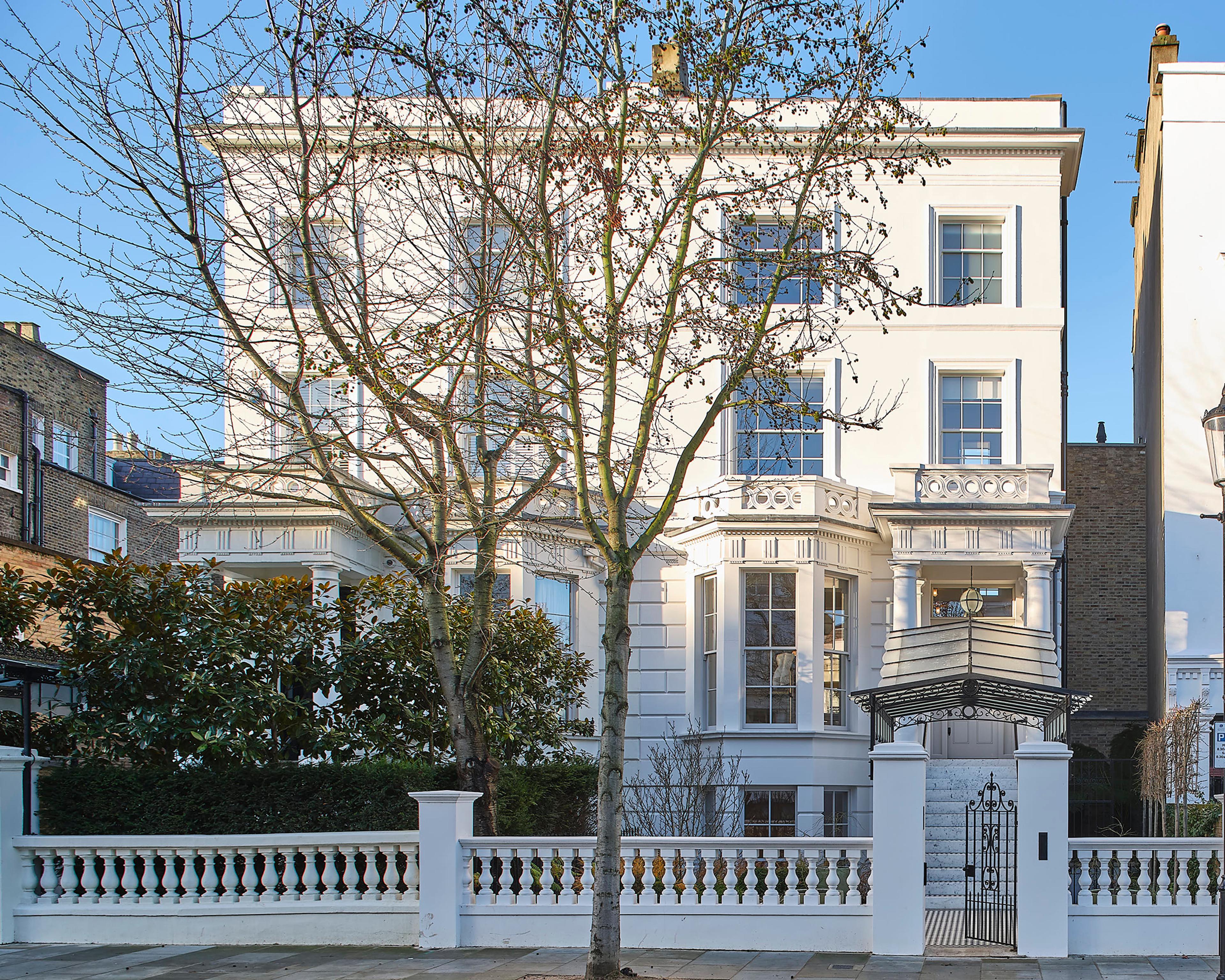
The completed front façade Photo: Kilian O'Sullivan
While the front facade of the house remained largely intact, after decades of unsympathetic alterations and subdivision, the original interior details had been almost entirely lost. The new interior design reinstates a version of what might have existed, both in terms of detailing and selection of materials, but updated to a new layout to suit modern patterns of living.

Façade retention works in progress

New bay window and linings
On the lower ground floor, a nook is created with built-in seating and a picture window providing views the length of the garden. The patterned stone floor continues through a full height opening from the kitchen and family dining area.
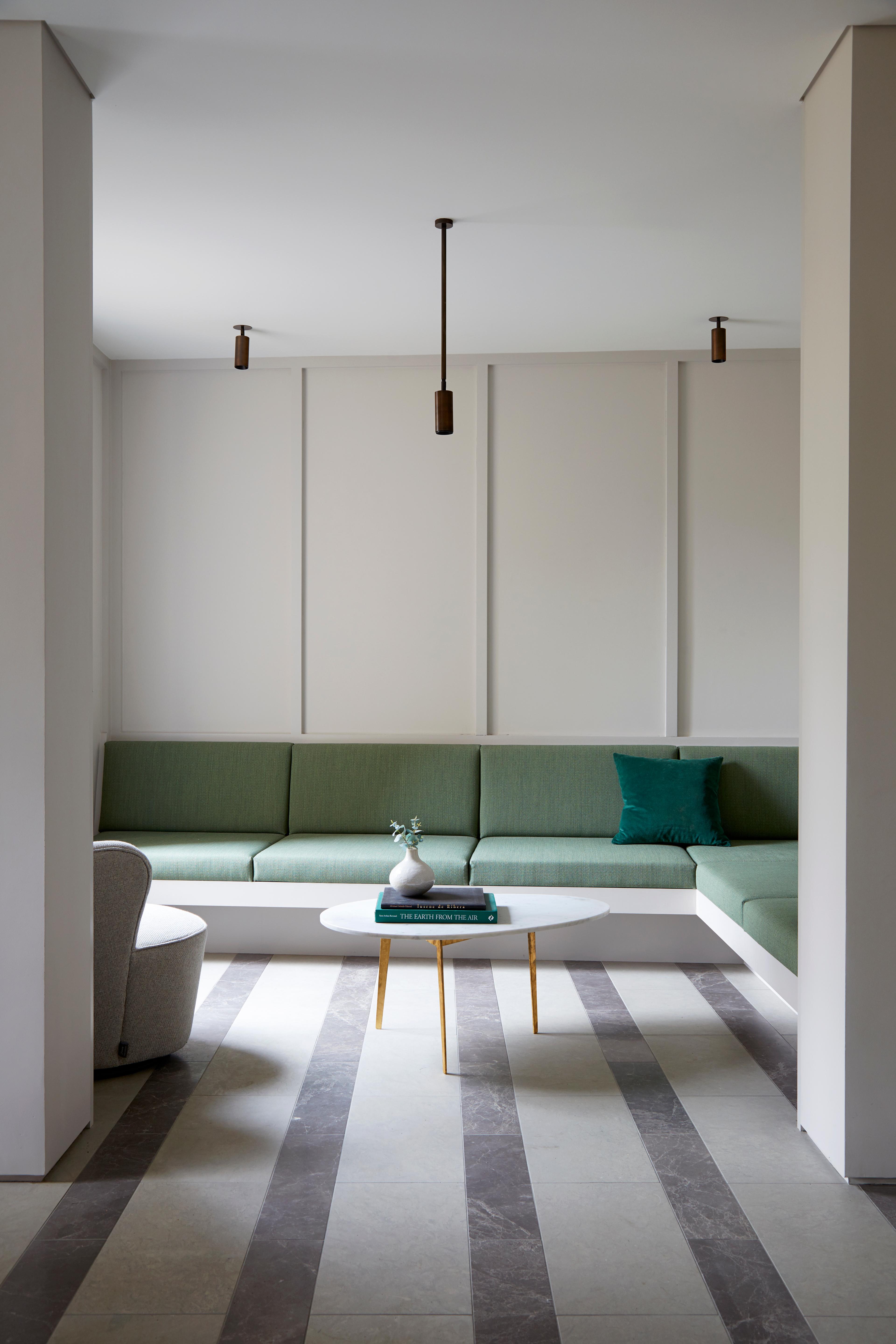
Photo: Anna Stathaki
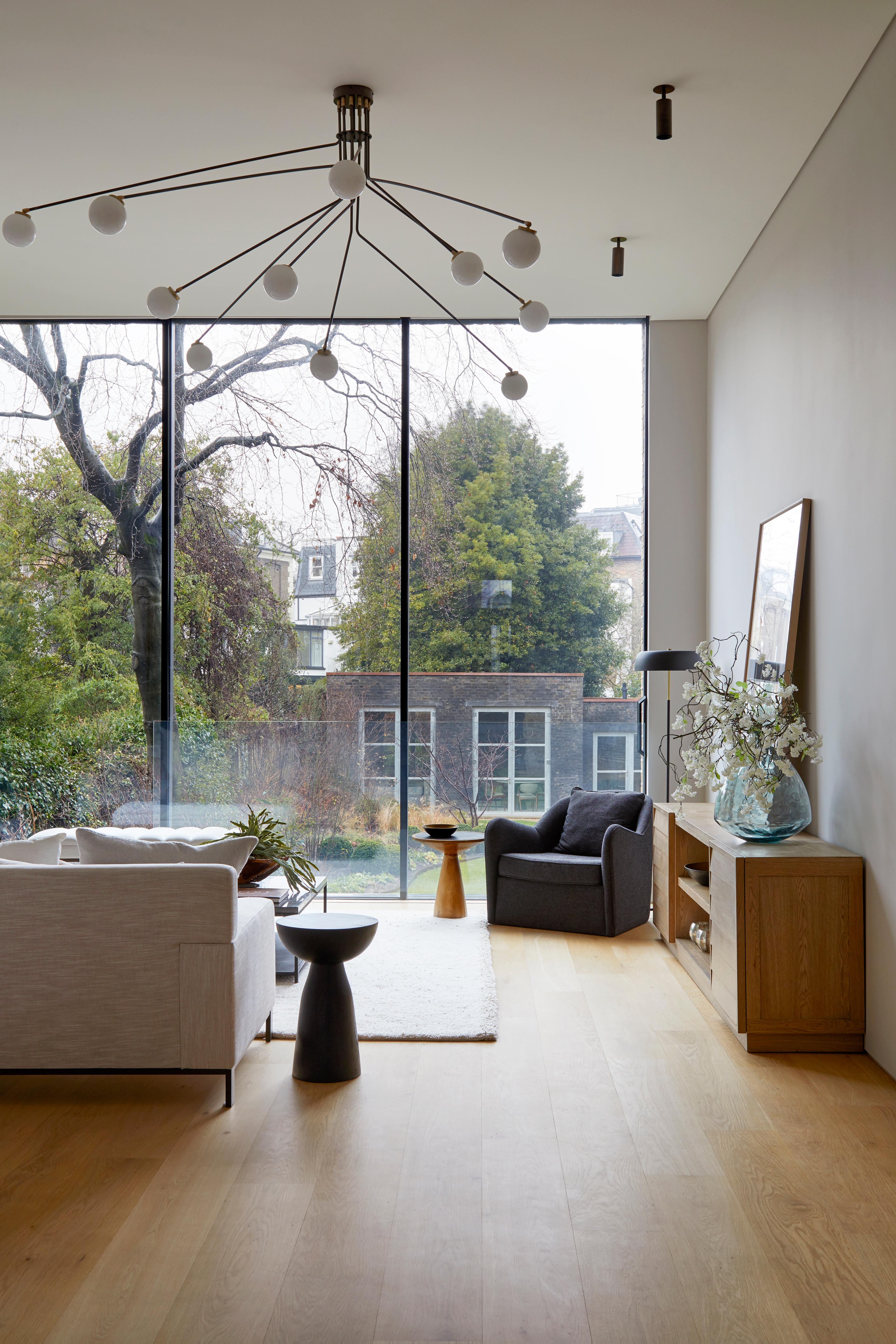
An upper ground floor reception room Photo: Anna Stathaki
The back of the house was extended at lower and upper ground floor levels, to Pitman Tozer Architects' design, with full height windows facing the garden. Internally the architecture is pared-back to a minimum with simple shadow gaps replacing the ornate cornices or profiled skirtings and architraves used in the historic rooms at the front of the house.
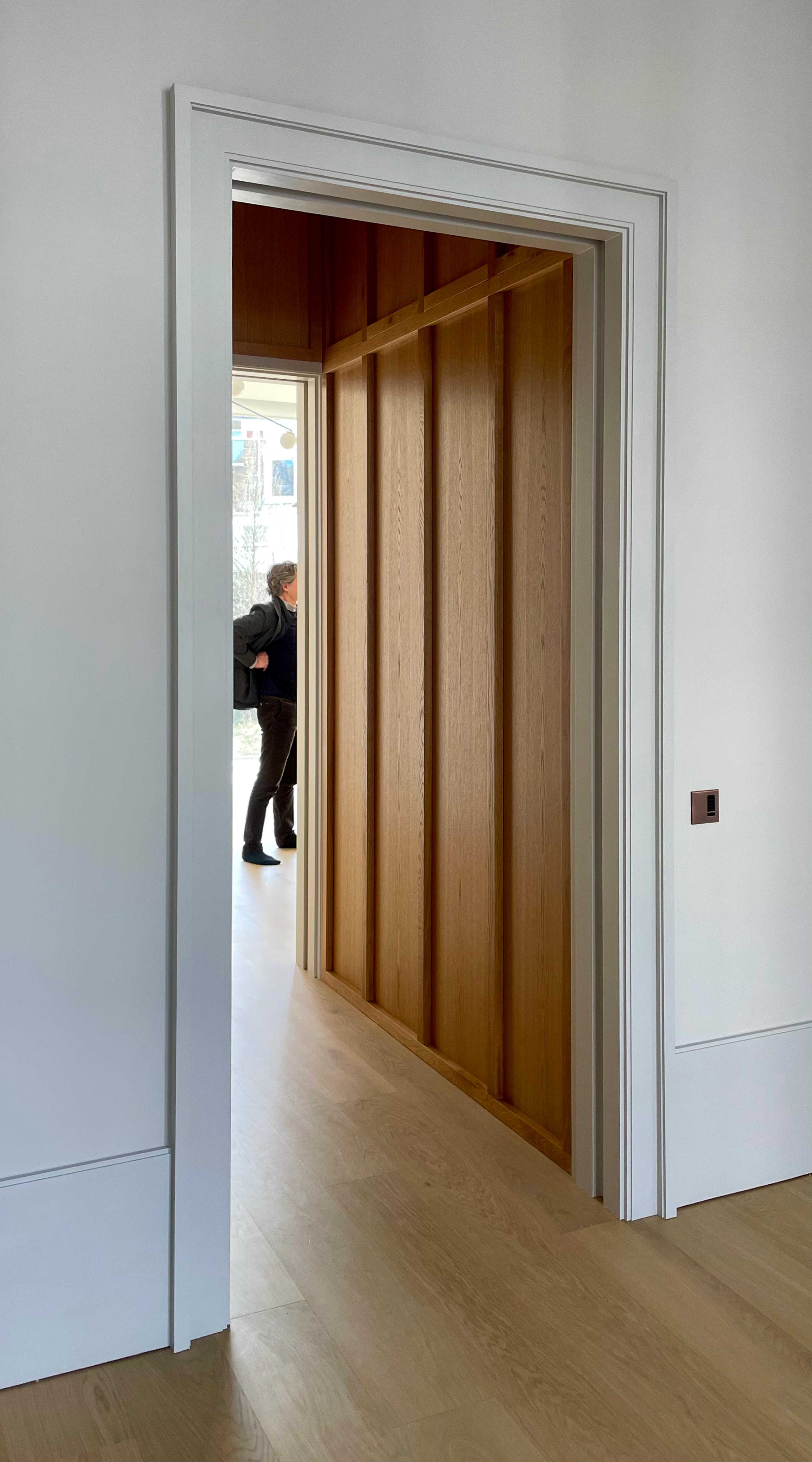
Panelled oak lining between two reception rooms
A new staircase and lift connects all six storeys from basement up to attic. The stair is designed with bronze finish balusters and a profiled oak handrail with integrated lighting. A dumb waiter connects the lower ground floor kitchen to the dining room on the floor above.
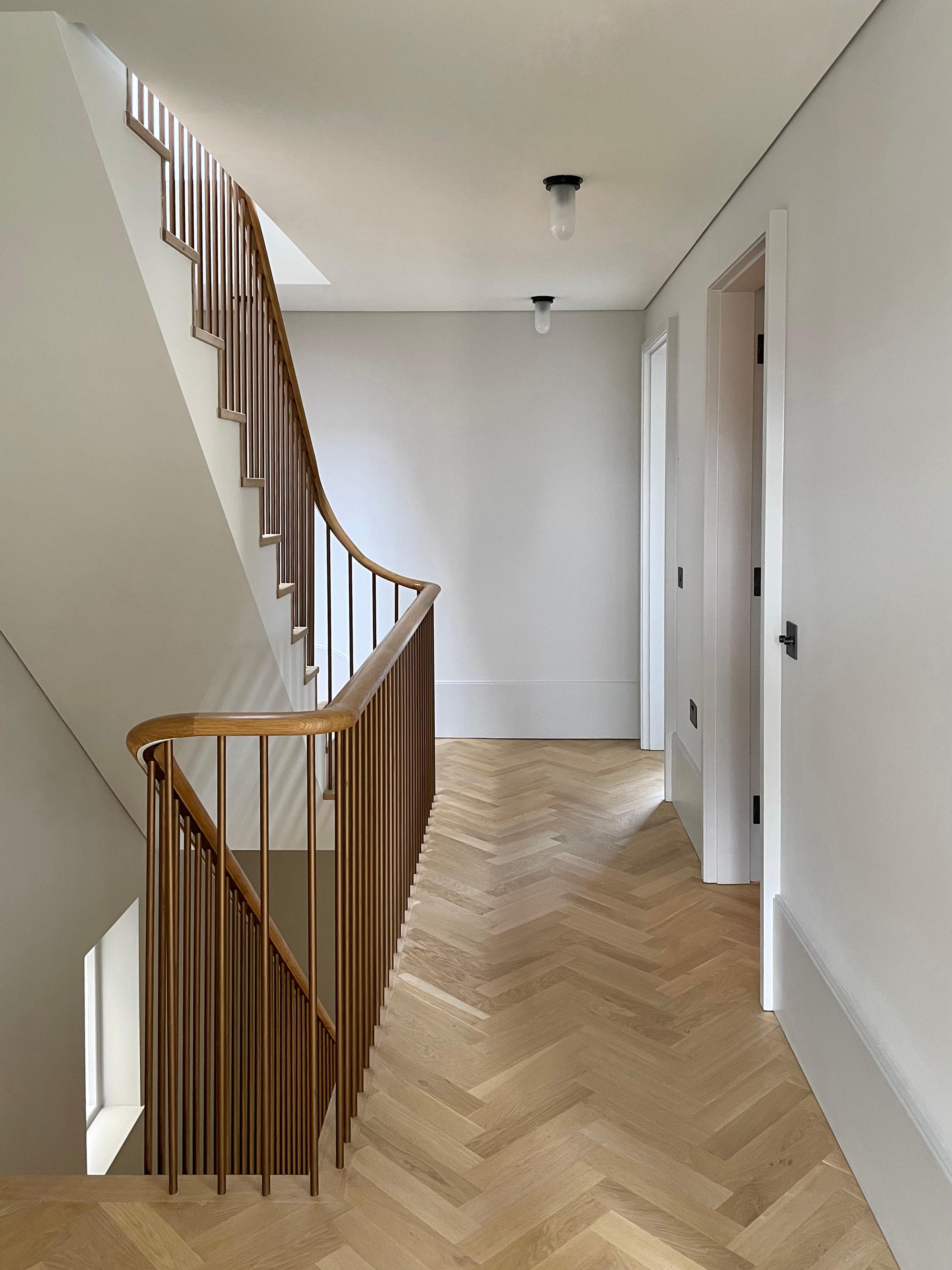
A new staircase connects all six storeys

Stainless steel and marble vanity unit Photo: Emily Marshall
The principal bedroom suite occupies the entire first floor. The bathroom is designed in large panels of Cipollino marble, partly inspired by the luxurious bathroom interior of the Stoclet Palace in Brussels by Josef Hofmann.
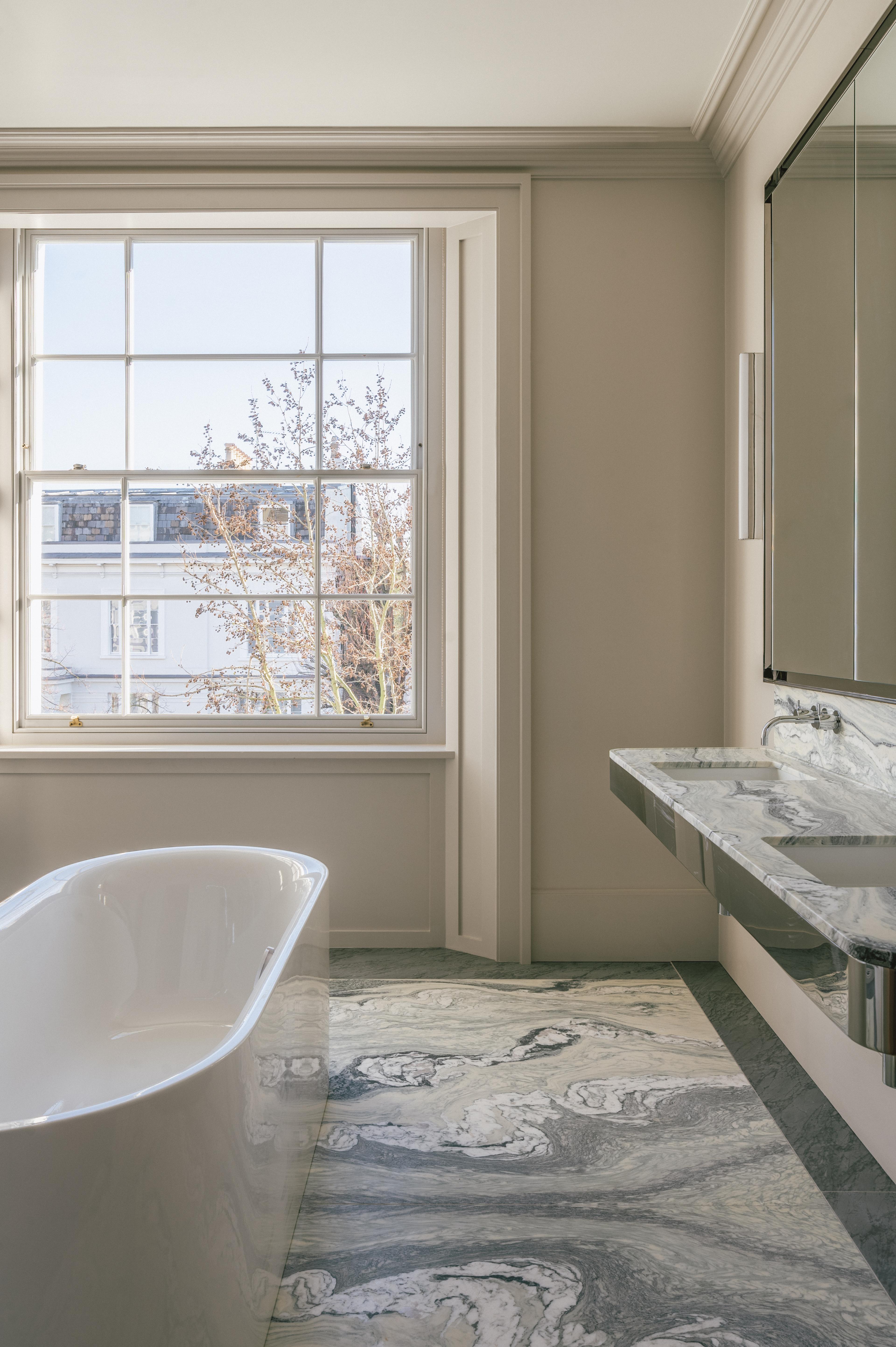
Cipollino marble ensuite bathroom Photo: Emily Marshall
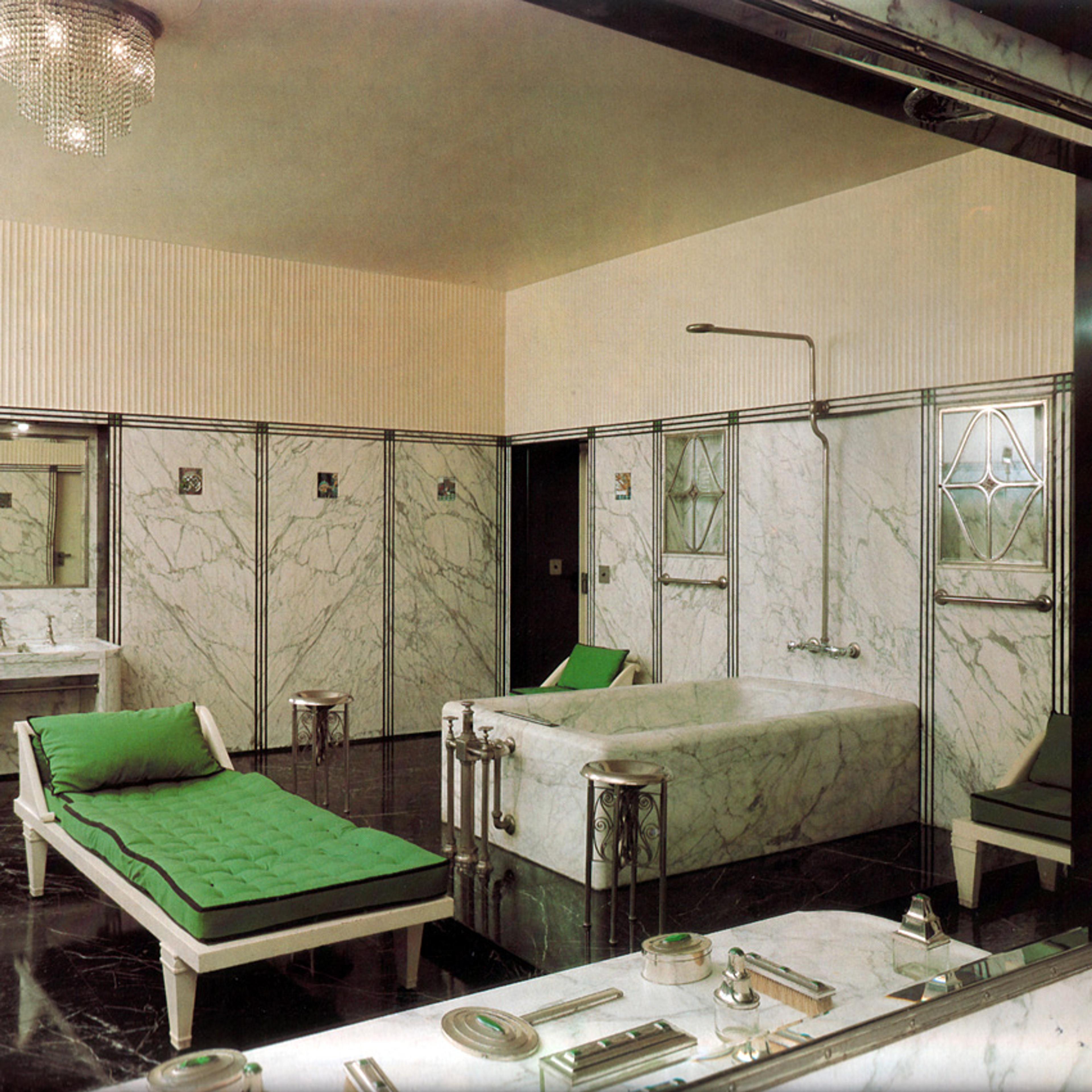
Palais Stoclet by Josef Hoffmann, 1935
2018–2020
Residential
Refurbishment
Built
610 m²
£3,400,000
Bodker & Company
Pitman Tozer
Form Structural Design
EngDesign Ltd.
Brendan Hennessy Associates
Emily Marshall; Nick Hill Architects
The project called for the full interior architecture and fit-out design of a six-storey 1850s townhouse in the Pembridge Conservation Area in Notting Hill, Royal Borough of Kensington and Chelsea.
While the front facade of the house remained largely intact, after decades of unsympathetic alterations and subdivision, the original interior details had been almost entirely lost. The new interior design reinstates a version of what might have existed, both in terms of detailing and selection of materials, but updated to a new layout to suit modern patterns of living.
The back of the house is extended at lower and upper ground floor levels, to Pitman Tozer Architects' design, with full height windows facing the garden. Internally the architecture is pared-back to a minimum with simple shadow gaps replacing the ornate cornices or profiled skirtings and architraves used in the historic rooms at the front of the house.
A new staircase and lift connects all six storeys from basement up to attic. The stair is designed with bronze finish balusters and a profiled oak handrail with integrated lighting. A dumb waiter connects the lower ground floor kitchen to the dining room on the floor above.
The principal bedroom suite occupies the entire first floor. The bathroom is designed in large panels of Cipollino marble, partly inspired by the luxurious bathroom interior of the Stoclet Palace in Brussels by Josef Hofmann.
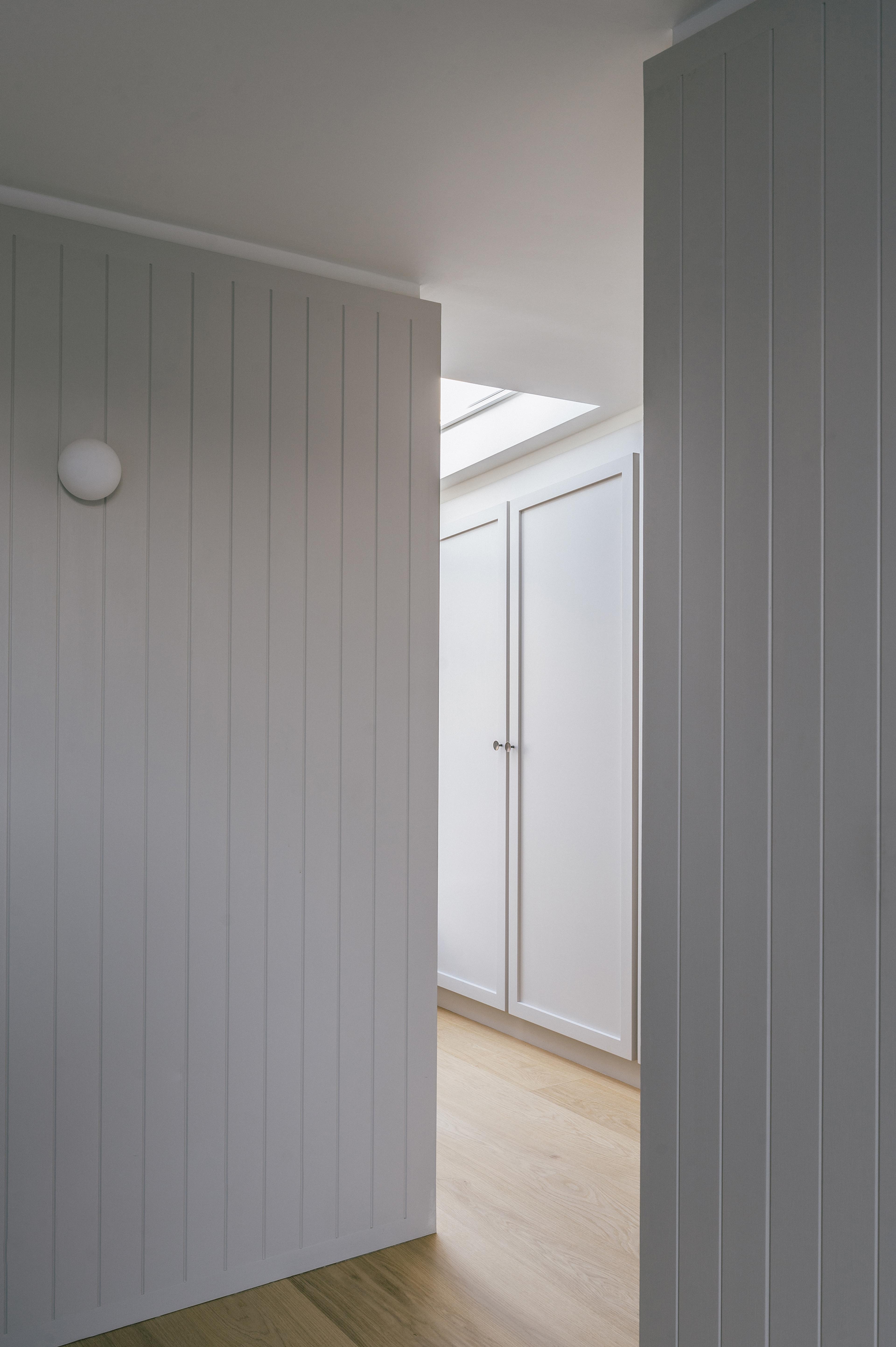
Nick Hill Architects is an RIBA chartered architectural practice and design studio based in London founded in 2017.
Our practice proceeds from an idea of architecture that is richly associative, engaged with history and memory, as much as it is with the complexities of modern construction, to create thoughtful projects that are rooted in culture, time and place.
Through a series of early built projects, the practice has established a particular sensibility for the characterful use of materials; how they are combined and the care with which they are detailed – whether objects, room interiors, individual buildings or the public spaces in between.
Our designs are empathetic, led by considering how people experience objects, buildings or places. Charles Eames said the role of a designer is like that of a thoughtful host who always anticipates the needs of their guests. We hold this to be true not just for the practical everyday, but for the poetic, the delightful, or what Louis Kahn called the ‘unmeasurable’.
We are strongly collaborative by instinct and believe the more attentive we are to other voices in the design and construction process – from client and end-user to skilled maker or site labourer – the better the outcome. From its start, the practice has valued working in collaboration with other architects and designers and continues to learn from its work with other practices to this day.
At a time of climate crisis and rapid demographic change, we find ourselves designing for a future that is increasingly uncertain. In response we are committed to finding ways of both making and repairing that are resilient, adaptable, and with an economy of means as a central tenet in all projects, no matter the size or budget.
Nick has twenty five years’ experience working in architectural practices in the UK and in Hong Kong.
For more than ten years he was an Associate Director at David Chipperfield’s office in London, leading a series of high profile projects including two acclaimed new public galleries, the Hepworth Wakefield in West Yorkshire and Turner Contemporary in Margate, as well as the rebuild and refurbishment of Hotel Café Royal on Regent Street, and the realisation of a masterplan for the Royal Academy of Arts campus on Piccadilly.
From 2017 he worked as a consultant to Witherford Watson Mann Architects, drawing on his experience working with public galleries and historic buildings, he led their major refurbishment of The Courtauld Gallery in Somerset House until its completion in 2021. The project was shortlisted for the RIBA Stirling Prize 2023.
Nick has been an invited critic and guest lecturer at architecture schools across the UK and in 2013 and 2014 was a guest lecturer at the Graduate School of Design in Harvard. He has served on competition juries and in 2013 was chair of the RIBA Awards jury for the East England region. He is currently an examiner for Part 3 professional studies at the Architectural Association School of Architecture.
- Kam Bava
- Neil Ditte
- Joseph Elbourn
- Anna Molodij
- Eimear O'Brien
- Dylan Radcliffe Brown
- Carolina Thorbert
- Louise Trodden
- Andy Wakefield
A selection of reference images which inspire the practice’s work.
We welcome speculative applications sent as hard copy CVs with examples of work by post, or by email to info@nickhillarchitects.com (maximum 10mb).
Nick Hill Architects
Unit 4 The Old Stable House
53–55 North Cross Road
London
SE22 9ET
info@nickhillarchitects.com
+44 7824 463889
Instagram





